Vickery, L., (2018). Some Approaches To Representing Sound With Colour And Shape. Tenor 2018 Conference, Concordia University, Montréal.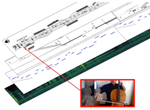
In recent times much of the practice of musical notation and representation has begun a gradual migration away from the monochrome standard that existed since the emergence of printed Non-Western music in the 16th century, towards the full colour pallet afforded by modern printers and computer screens. This move has expanded the possibilities available for the representation of information in the musical score. Such an expansion is arguably necessitated by the growth of new musical techniques favouring musical phenomena that were previously poorly captured by traditional Western musical notation. As time-critical form of visualisation there is a strong imperative for the musical score to employ symbols that signify sonic events and the method of their execution with maximal efficiency. One important goal in such efficiency is “semantic soundness”: the degree to which graphical representa- tions makes inherent sense to the reader. This paper ex- plores the implications of recent research into cross-modal colour-to-sound and shape-to-sound mappings for the application of colour and shape in musical scores. The paper also revisits Simon Emmerson’s Super-Score concept as a means to accommodate multiple synchronised forms of sonic representation (the spectrogram and spectral de- scriptors for example) together with alternative notational approaches (gestural, action-based and graphical for ex- ample) in a single digital document.
|
O’Connor , D. and Vickery, L., (2018). Towards a Notation for Trumpet Valve Rotation. Tenor 2018 Conference, Concordia University, Montréal.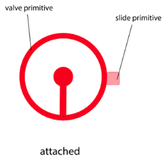
Many contemporary performers and composers seek new sounds through extension of traditional instrument techniques. For the trumpet one such extended technique is valve rotation, the rotation of a trumpet piston valve within its casing affecting the timbral complexity of airstream effects. This paper describes the development of a system for notating valve rotation using a prescriptive graphical language and an animated interface for entering continuous rotation and airstream data.
|
Wyatt, A. Vickery, L. and James, S. (2018). The Canvas Mode: Rapid Prototyping For The Decibel Scoreplayer. Australasian Computer Music Conference 2018, Perth Australia.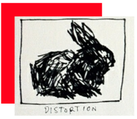
This paper describes a new modality for the Decibel ScorePlayer, an iPad-based digital notation delivery system. “Canvas Mode” allows core elements of a digital score, including preloaded image files, to be manipulated externally by OSC messages sent via UDP. This development allows composers to implement works involving generative and indeterminate notation in the ScorePlayer without the generative procedures having to be hard-coded into the application and as such provides a “sandboxing” environment for future developments in digital and animated notation. The Canvas Mode was initially announced at the third International Conference on Technologies for Music Notation and Representation in 2017, but has been significantly re-coded to provide greater stability and versatility, in particular allowing multiple images to be embedded and manipulated within the same graphics layer. Importantly this allows for the real-time generation of complex multi-glyph scrolling notation. The paper will describe the feature set of the Canvas Mode and compare rendering time on laptop and tablet versions of scores.
| ||||||||||||||||||
Maltman, J. and Vickery, L. (2018). The Foundations of Speech Melody Composition and the dawn of digital music era, Australasian Computer Music Conference 2018, Perth Australia.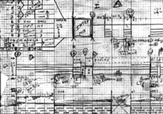
This paper explores the emergence of speech- melody composition in the 1980s in the works of Scott Johnson (John Somebody, 1982) and Steve Reich (Different Trains, 1988). Johnson assembledJohn Somebody entirely in the analogue domain, while Reich utilised a combination of analogue digital technologies to create Different Trains.
These two works sit at the transition between digital and analogue approaches to the use of technology as a compositional tool. The paper examines the composers’ processes in determining melodic, harmonic and rhythmic content from speech and the influence of shifting technological advances upon them. The discussion takes place in the context of the advent of digital audio in commercial products such as samplers (E-MU Drumulator 1983) and Audio Workstations Digidesign (Sound Designer 1985).
|
Felton A. and Vickery, L. (2018). Exploring the Interaction between Postminimalist Music and Contemporary Dance, Musicological Society of Australasia Conference 2018, Perth.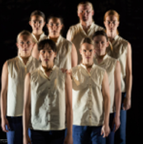
From the mid-twentieth century through to the present day, choreographers have been using minimalist and postminimalist music to accompany dance. Choreographers such as Laura Dean, Crystal Pite and Australian Natalie Weir have used this music to produce work that demonstrates a clear potential to facilitate creation and performance. Two of the primary functions of music in dance are to provide the dancers with a framework and impetus to aid movement, and to create and communicate meaning and emotion to an audience. Composers writing for dance need to find ways to unite these goals in a way that best suits the complete artwork. Postminimalist composition techniques can be applied to a range of instrumentations and genres; they can also provide a broad range of textural and timbral possibilities to generate emotional response and communicate meaning. The emphasis on rhythm and repetition, moreover, facilitates the choreography by providing a framework upon which dance can be constructed and performed. This paper examines how postminimalist composition techniques such as phasing, subtractive and additive processes can be used to underpin the creation of music for dance. The paper will contextualise this discussion within both the existing research in choreomusicology and my own artistic practice when composing for contemporary dance.
| |||||||

